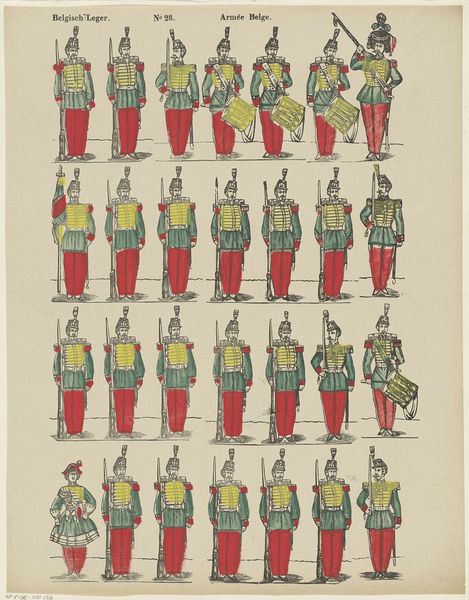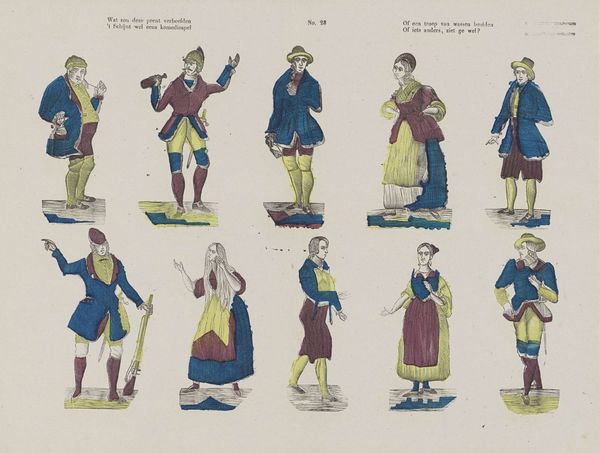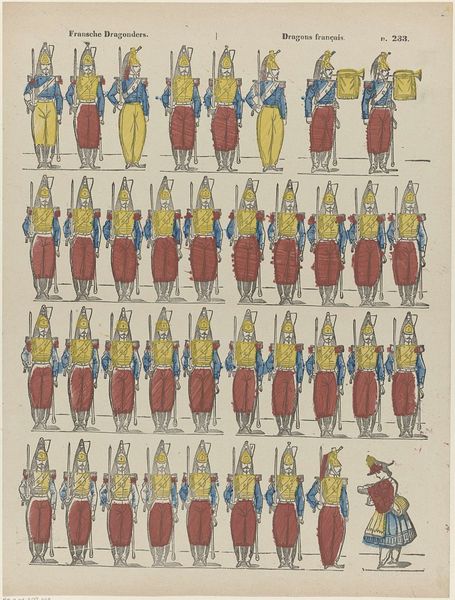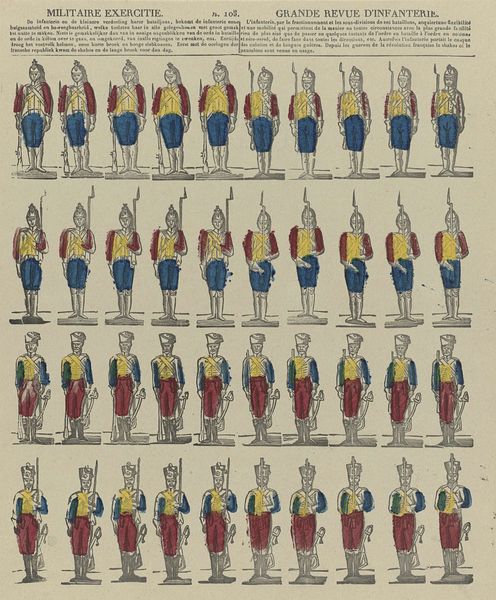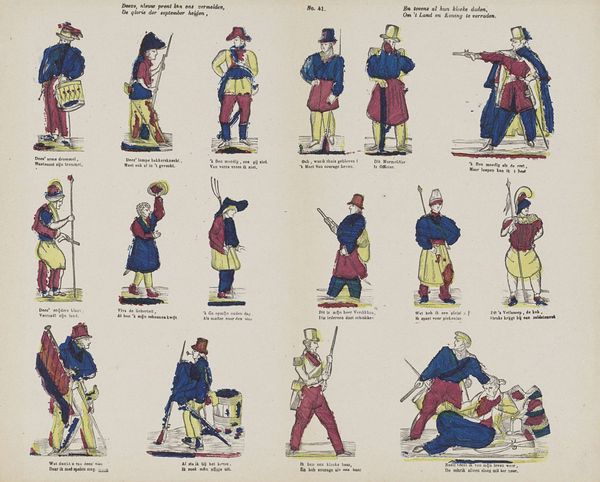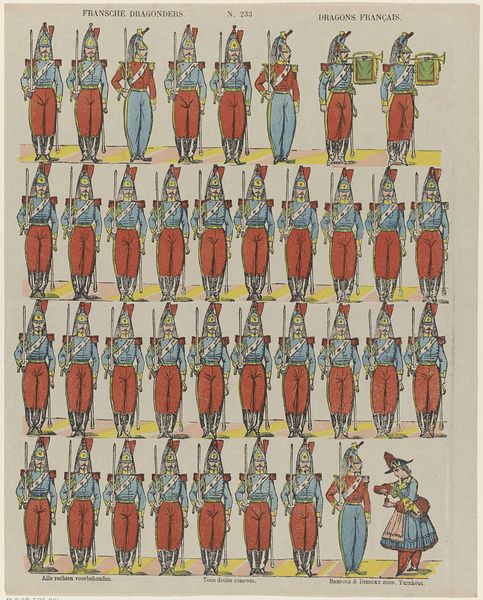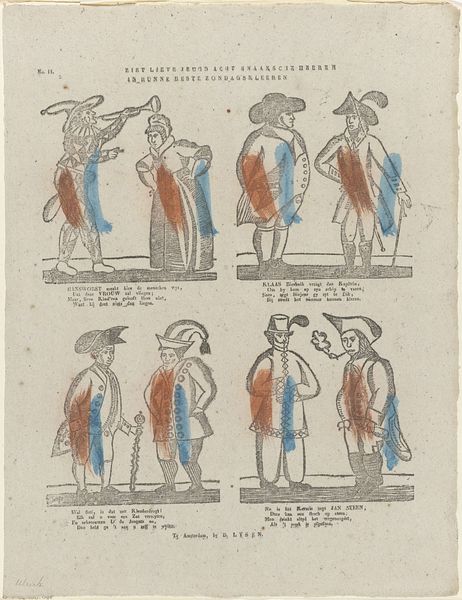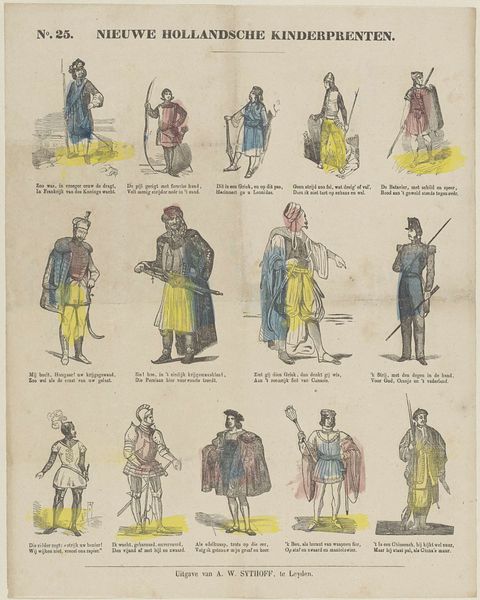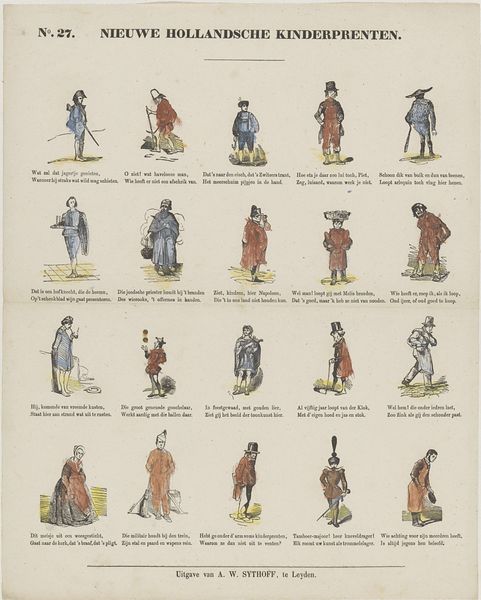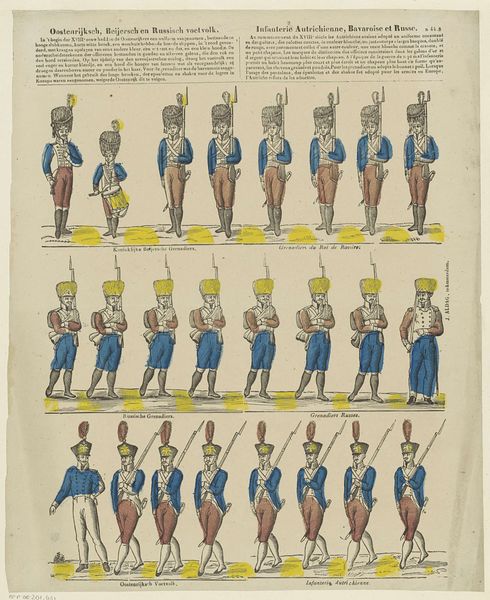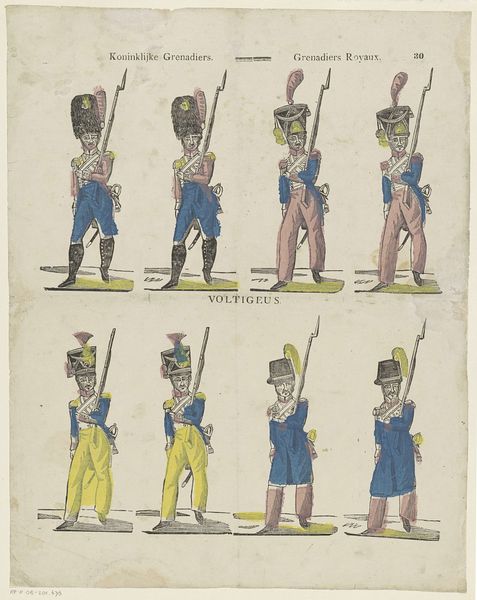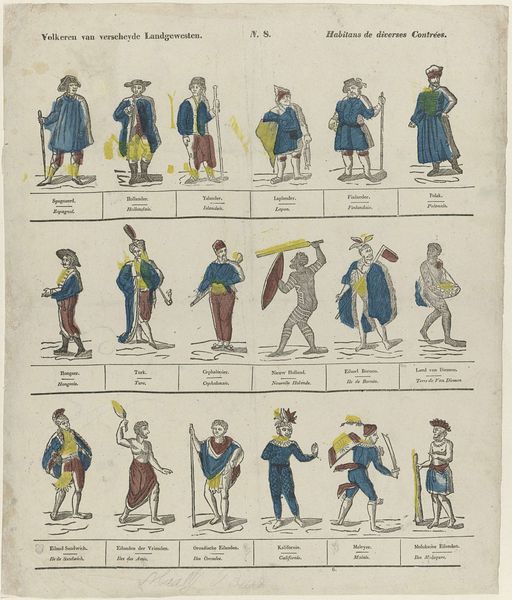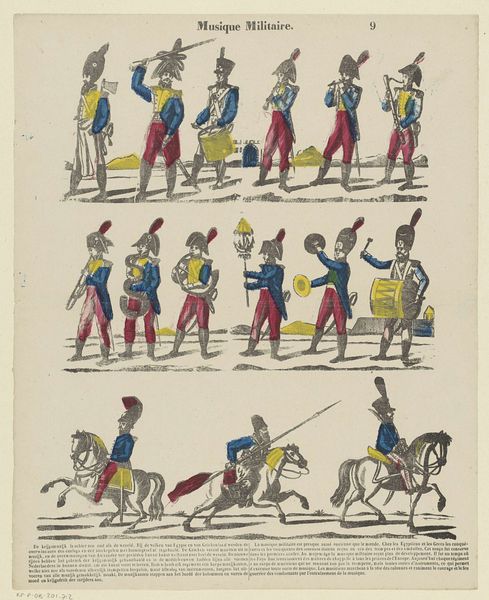
print, watercolor
#
portrait
# print
#
figuration
#
watercolor
#
watercolour bleed
#
watercolour illustration
#
history-painting
#
watercolor
Dimensions: height 385 mm, width 315 mm
Copyright: Rijks Museum: Open Domain
Curator: So, this print from 1827-1894, titled "Bédouins", features watercolor and possibly other printmaking techniques. I'm struck by the repetition and almost stencil-like quality of the figures. What catches your eye? Editor: Well, the way these figures are reproduced is a bit odd. It feels like there’s a deliberate choice in showing them like copies. It's as though the artist is less interested in the individual, and more focused on a group, perhaps? What are your thoughts? Curator: I think you're right to consider that. From a materialist perspective, this image offers insight into the methods of artistic production during the 19th century. The repetition points us towards industrial printing practices, impacting both the speed and reach of image dissemination. How does that repetitive depiction of laborers reflect or even shape colonial perspectives and power structures? Editor: That makes sense. The serial reproduction mirrors mass production. Is the use of watercolor significant in this context, then? Is it about retaining some artisanal touch even while embracing the benefits of mechanization? Curator: Exactly. Watercolor, though reproducible, maintains a semblance of "uniqueness" through its inherent variations – the bleed of the pigment, the texture of the paper showing through. This is important to contrast with the then emerging photographic representations. How might those little, tiny imperfections in printing challenge or subvert any claims to perfect reproduction, of "authentic" representations of these men? Editor: Hmm, the unevenness emphasizes the hand of the maker and somehow undermines any idealized notion the viewer might be encouraged to have about its subject, the Bedouins. So by focusing on the materials and processes, we gain a completely new awareness, seeing this artwork not as an artistic impression, but more as social commentary. Curator: Precisely. And perhaps more powerfully, a peek into the mechanics and the industrialization of image making, and even of early colonial representations, too.
Comments
No comments
Be the first to comment and join the conversation on the ultimate creative platform.
